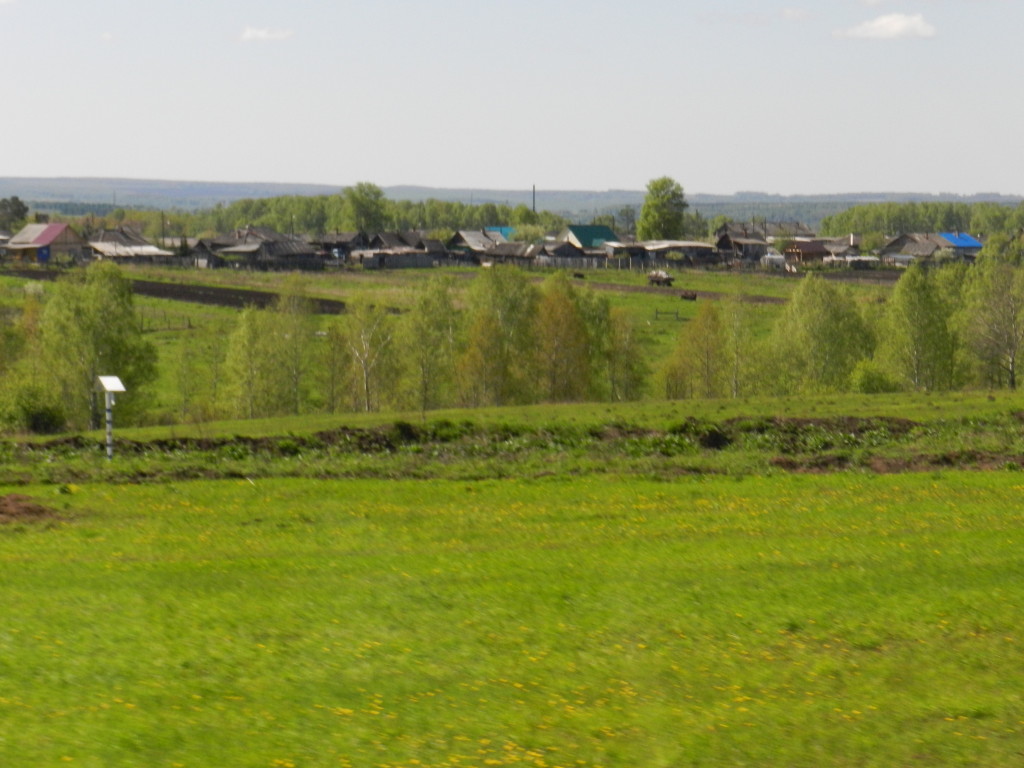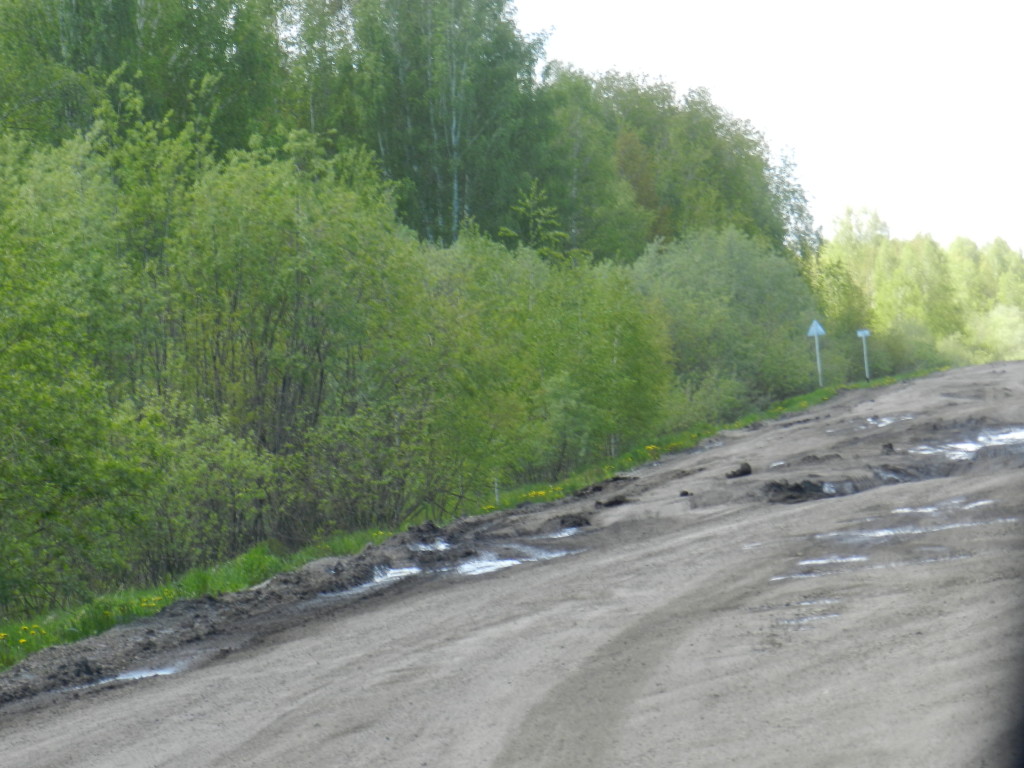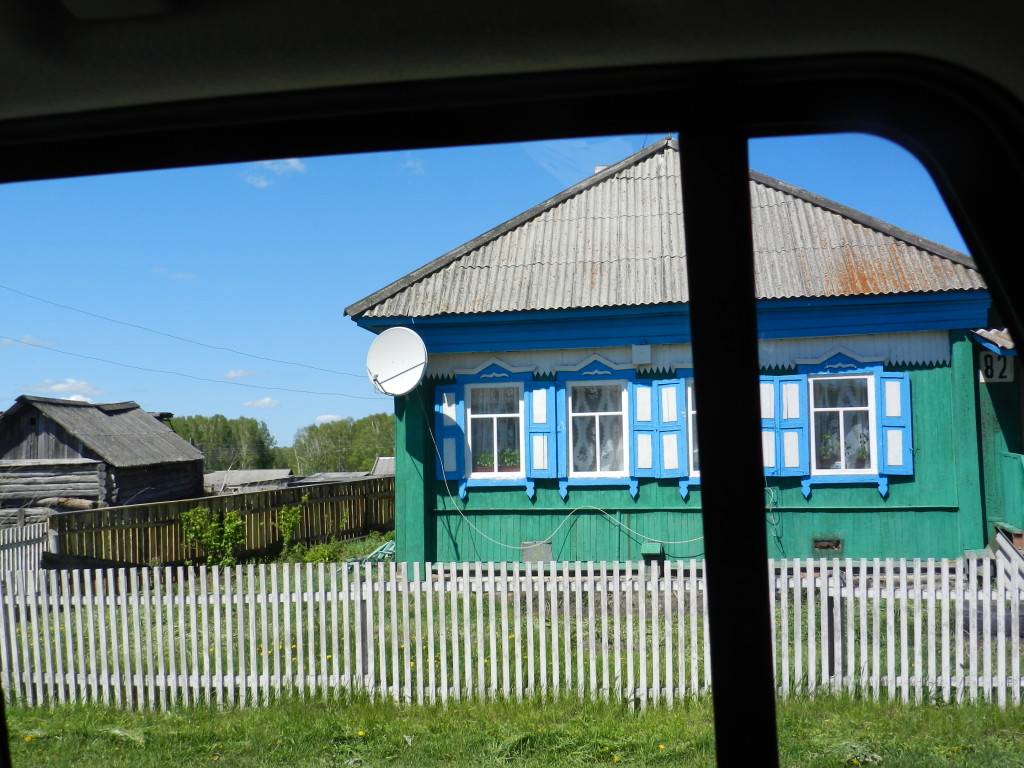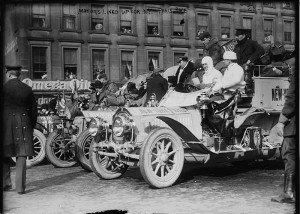When George Schuster and the Thomas Flyer arrived in Tomsk on June 27, 1908, the Flyer had again caught up with the German Protos, but the Americans were still unable to take the lead. The Protos had arrived on morning before the Flyer arrived, but the German team delayed their departure until the following morning for some repairs, making it possible for the Flyer to catch up. But due to various logistics issues, the American team wasn’t able to leave until 3 a.m. on June 28, so Schuster continued to drive all day and night to catch the Germans.
During the portion of the trip from Irkutsk to Tomsk, the 1908 racers had relatively few problems. However, the Flyer had to be pulled out of about five feet of water when crossing a river near a village because so many curious bystanders had crowded onto the small improvised ferry used for the crossing that the raft sank. But the villagers came to the rescue and pulled the Flyer to shore.
The Flyer also encountered some problems due to the road conditions, and the New York Times reported that, “The tremendous bumping the car had met with on part of the road had bent the spring hanger.” As a result, Schuster ordered his guide, Captain Hansen, and the Times correspondent to take the train to Tomsk to lighten the load until they could get the spring hanger repaired. After pointing this episode out to John at lunch today, he briefly considered putting Luke on a train to Tomsk as well.
Click here to read the original New York Times article.
We left Krasnoyarsk this morning about 7:30 for our 400+ mile drive to Tomsk. We are now officially in Western Siberia, and I’ve noticed a shift in the terrain from forested hills to flatter country with shrubs and scrubby trees that look like small aspen.
We had excellent roads for driving this morning and we were nearly at the half-way point at lunch time. About 1:45, we arrived in the town of Mariinsk and followed the signs that pointed to Tomsk, which put us onto a different route than the one Ksenia had planned to use. But my map showed a big fat highway line to Tomsk that looked significantly shorter than the planned route, so between the map and the signs in Mariinsk, we decided to take the shorter route.
Everything was fine for the first 20 minutes on our new route, and then we ran into some awesome potholes. Another 20 minutes later, we considered turning back, but then Ksenia asked someone stopped by the roadside when the road would improve and he said another 30 km or so, so we decided to stick with it.
We bounced around for another two hours, but I’m pretty sure the route we took was probably closer to the route used by the 1908 racers as they drove to Tomsk. We also traveled through many small villages we wouldn’t have seen otherwise. One thing that amazes me is how many of the houses in the small villages we’ve passed through have satellite TV. It’s a wonderful juxtaposition of an old way of life with new technology.
We arrived at our hotel about 7 p.m., about the same time we probably would have arrived if we’d stuck with the original route, which was longer, but probably easier to drive. But we all agreed that the route we chose was much closer in spirit to the original race!
Tomorrow morning we head to Novosibirsk, a short 268 km drive that we hope will end with a box of four new shocks for the Roadster waiting for us.





